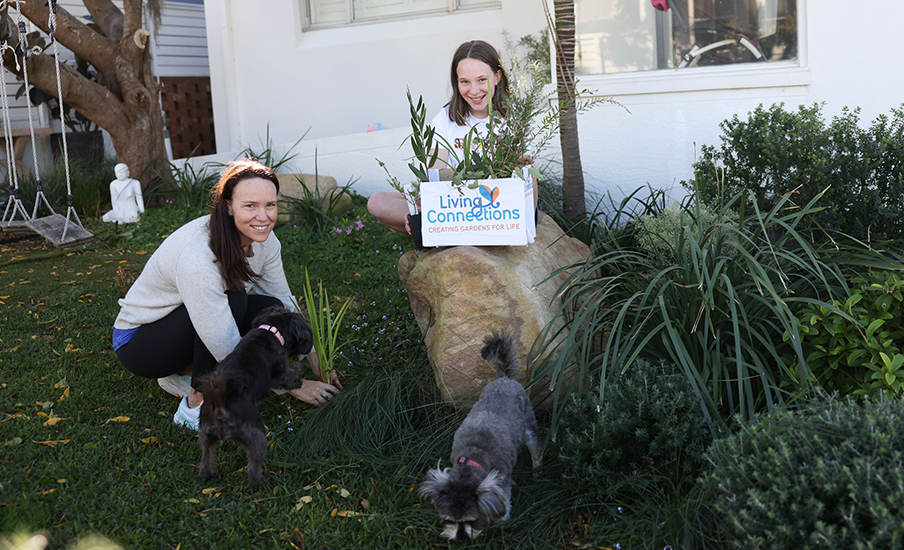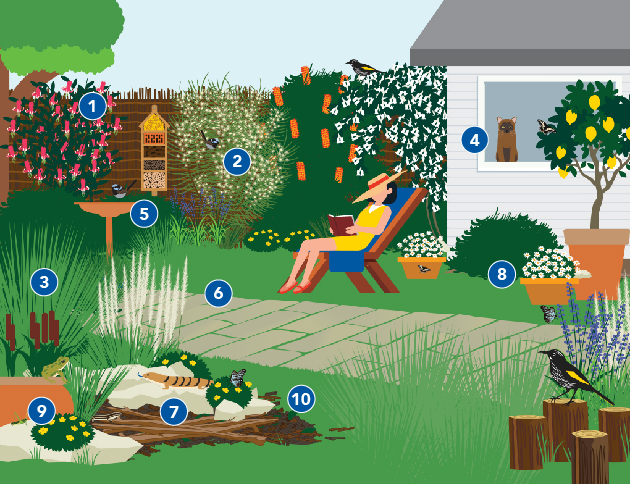- Home Home
-
Residents
Residents
- Waste & recycling Bins, clean-ups and disposing of tricky household items
- Parking Permits, car parks, maps and safety
- Your trees, plants & garden Tree pruning, native gardens and Living Connections
- Neighbourhood issues Report and resolve common issues
- Pets Dog and cat ownership, lost animals and off-leash parks
- Precinct committees Your local connection to Council
- Waverley LGA Maps Maps of the environment, planning zones and more
- Payments Pay for rates, certificates, permits and licences
-
Community
Community
- Children, youth & family services Early education, day care, support & resources
- Awards & grants Local Hero Awards, Garden Awards, Small Grants
- Get involved in your community Volunteering, creating connections, gardening
- Over 60s Services, activities, Mill Hill 60+ program
- Housing & homelessness Affordable housing, programs & support services
- Cultural diversity & inclusion Multiculturalism, language help, citizenship
- Aboriginal & Torres Strait Islander people Commitment to Reconciliation, plans & policies
- Disability inclusion Support services, access & inclusion projects
-
Business
Business
- Resources for Business Events, grants and support
- Innovation Roadmap 2025 to support business
- Tourism Home to Australia's most famous beach.
- Sponsorship Support local events
- Procurement Submitting tenders & expressions of interest to Council
- Commercial waste & recycling services Tailored waste services for business
- Mobile vending Waverley has limited mobile vending licenses
- Hello Bondi Council’s website to help visitors enjoy their stay
-
Recreation
Recreation
- Events Browse performances, exhibits and experiences
- Places of interest Historic buildings, markets, dining and Bondi Pavilion
- School Holiday Programs Fun-filled activities, workshops and events.
- Beaches & coast Beach information, safety, pool cleaning schedules
- Parks & reserves Location, public facilities and accessibility
- Arts & culture Artistic vision, creative programs, spaces and awards
- Venue & sport facilities hire Book indoor venues and sport facilities in Waverley
- Use of public spaces Events, commercial activations, filming etc
-
Environment
Environment
- Council leadership on environmental action Research, strategies and Council programs
- Climate resilience and reducing emissions Switch to electric, go solar and grants for apartments
- Water and the coast Keep beaches clean, save water and enjoy the sea
- Towards zero waste Reduce waste at home and at work
- Public tree management & urban greening Street Tree Masterplan and planting zones
- Native vegetation and animal habitat Join Bushcare and enjoy Waverley’s natural spaces
- Transport Council policy, bike and car share, electric vehicles
- Second Nature Council’s environmental news and events hub
-
Planning & Development
Planning & Development
- Development Applications The DA process, key documents & community consultation
- DA Tracking Tool Search a Development Application by number or date
- Application forms & certificates incl Planning, Rating, Construction and Occupation
- Waverley Local Planning Panel (WLPP) DA determination panel
- Compliance and regulations incl fire safety, food, pools and pollution
- Heritage incl Heritage Conservation Areas and fact sheets
- Urban planning and design Making Waverley a great place to live and work
- Major projects Council-delivered buildings, streets and parks
-
Council
Council
- Organisation structure Four directorates serve the community
- Mayor & councillors Your Mayor, Councillors, wards and contact details
- Council & committee meetings Dates, agendas and minutes of meetings of Council
- Advisory committees Advisory Committees of Council
- Policies, plans, strategies and reports Council's vision and delivery
- Jobs Current vacancies and working at Waverley
- Access to information Gaining access to publicly available information
- Payments Pay for rates, certificates, permits and licences
- Home
- >
- Residents
- >
- Your trees, plants & garden
- >
- Starting a native garden
- >
- Living Connections
- Waste & recycling
- Parking
- Your trees, plants & garden
- Neighbourhood issues
- Pets
- Precinct committees
- Waverley LGA Maps
- Payments
Living Connections

Living Connections is a free Council program to help you transform your outdoor space into an urban wildlife habitat. This program is open to all residents of the Waverley Local Government Area (LGA) with a garden, courtyard or suitable balcony. Residents planting a verge gardenThis external link will open in a new window are also eligible.
Founded in 2019 with assistance from the NSW Environmental Trust, over 400 private gardens, schools and community gardens have all contributed to grow Living Connections that help our native wildlife move around the neighbourhood.
Help us establish 1000 habitat gardens by 2030 and reconnect important habitat.
Living Connections participants receive:
- Free native plants (ground covers & shrubs)
- A copy of the Waverley Habitat Gardening Guide
- Living Connections fence sign to help spread the word
- You may also be able to receive a garden visit from a horticulturist, depending on the size of your garden
- Networking and support through the Living Connections Facebook group.
Participants will be asked to:
- Keep an eye out for wildlife in your garden, particularly Superb Fairy-wrens, New Holland honeyeaters, Blue-tongue lizards and microbats (insectivorous bats).
- Collect your new seedlings from one of our plant collections days
- Care for your new plants using instructions provided; and
- Keep your cats inside or in an enclosure to protect native wildlife.
We particularly welcome participants who live in an identified habitat corridor (see map here), as your garden could make a big difference to helping our local small birds thrive.
Join Living Connections
Applications are now open and the program will recommence at the beginning of April 2025.
| Apply Now |
Ten tips for a healthy habitat garden

- Diverse species, heights and habits
- Dense prickly shrubs for small bird shelter
- Cluster plants together to create mini ecosystems
- Keep cats indoors or in a pen to protect wildlife
- Provide water for birds and insects, put a few stones in to enable critters to climb out
- Grasses and ground covers to attract insects
- Rock and log piles for lizards
- Flowers with yellow, white and blue shades, particularly favoured by bees
- Ponds large or small
- Woodchip mulch to enrich the soil, retain moisture, stabilise temperature and keep weeds down.
Phil's garden
“When I applied to join Living Connections, I was simply seeking some expert advice and suitable plants to encourage the small native birds that used to visit the garden to return. I used to see Superb Fairy-wrens in the garden but haven't for years.
I was pleasantly surprised by the Living Connections kit that was sent out. In fact, so much so that I had a total rethink of my original idea for our yard. I completely changed my plan and removed all the grass to be able to create an endemic scrub that would be a haven for small birds.
I received 30 native seedlings through Living Connections, including Flax-leaf Heath Myrtle, Native Fushcia and Prickly-leafed Paperbark and planted them using the provided layout. I have since added to these seedlings and now have 90 new plants in the garden.
I added other habitat elements including a bird bath, rocks for lizards, mulch and logs. Since the transformation of the garden there has been a noticeable change in the behaviour of the native birds and insects visiting the garden.”

